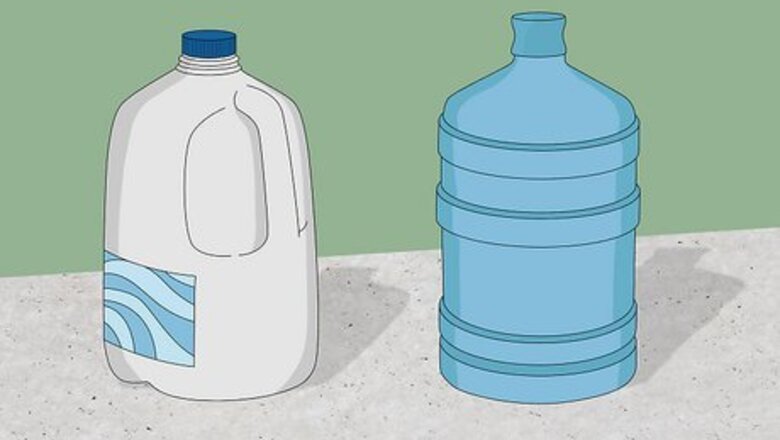
views
Preparing Sanitary Containers
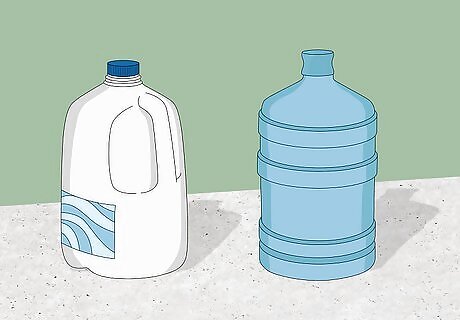
Decide how much water to store. The average person needs 1 gallon (4 liters) of water each day, half for drinking and half for food preparation and hygiene. Increase this number to 1.5 gallons (5.5 L) per person or more for children, nursing mothers, and sick people, and for anyone in a hot or high-altitude climate. Based on these numbers, try to store a 2 week supply for your household. In case of an emergency evacuation, store a 3 day supply in easily transportable containers. For example, 2 healthy adults and 1 child need (1 gallon or 3.8 liters / adult) x (2 adults) + (1.5 gal or 5.7 liters / child) x (1 child) = 3.5 gallons (13.25 liters) per day. A 2 week supply of water for this household is (3.5 gallons or 13.25 liters/ day) x (14 days) = 49 gallons (185.5 liters). A 3 day supply would be (3.5 gallons or 13.25 liters/day) x (3 days) = 10.5 gallons (40 liters).
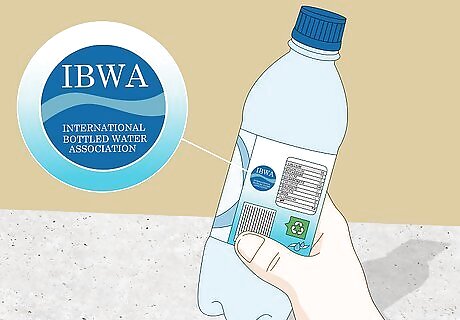
Consider bottled water. In areas that regulate bottled water, including the U.S. and E.U., sealed bottles of water are already sanitary and will stay good indefinitely. If you go this route, you do not need to worry about selecting appropriate containers or purifying the water. Check the label for certification by the IBWA (International Bottled Water Association), NSF (National Sanitation Foundation), or UL (Underwriters Laboratories). These demonstrate the product has met safety and quality standards. This is more important in countries that do not regulate bottled water.
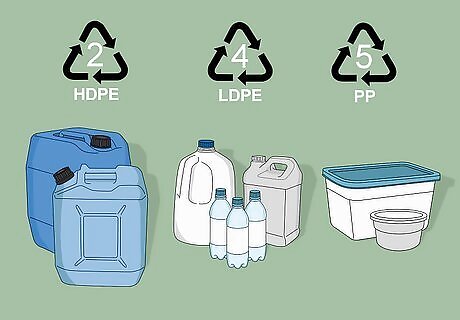
Select food grade containers. Plastic food or beverage containers marked "HDPE" or with a #2 recycling symbol are excellent options. Plastics #4 (LDPE) and #5 (PP) are also safe, as is stainless steel. Never reuse a container that held anything besides food and drink, and only use brand-new empty containers if they are marked "food grade," "food safe," or with a knife and fork symbol. Milk and fruit juice leave residue that is difficult to remove and encourages bacterial growth. Do not reuse containers that held these drinks. Glass jars are a last resort, since they can easily break in a disaster. Traditional unglazed pottery jars can help keep water cool in warm climates. Use one with a narrow mouth, lid, and tap if possible to encourage sanitary handling.
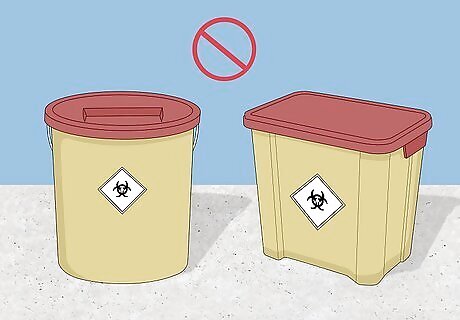
Avoid containers made from hazardous plastics. Look for the resin identification code on plastic containers, which typically consists of a number printed next to the recycling symbol. Avoid containers marked “3” (for polyvinyl chloride, or PVC), “6” (for polystyrene, or PS), and “7” (for polycarbonate). These materials can be hazardous to your health.
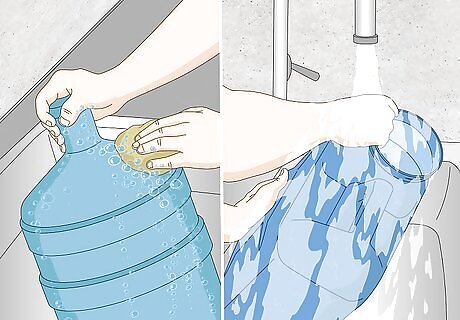
Clean the containers thoroughly. Wash them with soap and hot water, then rinse. If a container previously held food or drink, disinfect it with one of the following methods: Fill with water and mix in 1 tsp (5 mL) liquid household bleach for every quart (approximately 1 liter) of water. Swish to touch all surfaces, then rinse well. For stainless steel or heat-safe glass, submerge in boiling water for 10 minutes, plus 1 minute for each 1,000 ft (300 m) of elevation above an altitude of 1,000 ft (300 m). This is the best method for steel, since chlorine bleach can corrode the metal.
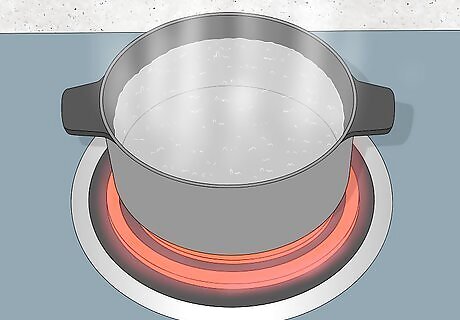
Disinfect water from unsafe sources. If your tap water is not safe to drink or if you get your water from a well, disinfect it right before storage. The best way to do this is to bring the water to a rolling boil for 1 minute, or 3 minutes at elevations above 5,000 ft (1,000 m). If you cannot boil the water, or do not want to lose water by boiling it, bleach is the next best option: Mix in ½ tsp (2.5 mL) of unscented, additive-free bleach for every 5 gallons (19 liters) of water. Double the amount of bleach if the water is cloudy or discolored. Let the water sit for half an hour. If you cannot smell a faint chlorine scent, repeat treatment and let sit another 15 minutes. In an emergency, you can also disinfect small amounts of water with water purification tablets. However, use these sparingly, as excessive use can impair thyroid function.
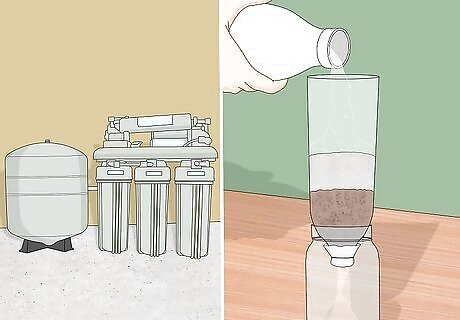
Filter out contaminants. Boiling or chlorine will kill microorganisms, but they will not remove lead or heavy metals. If your water is contaminated by runoff from farms, mines, or factories, pour it through an activated carbon filter and a reverse osmosis (RO) filter. You can make your own filter out of common materials. While not as effective as a commercial filter, it will remove sediment and some toxins.
Storing the Water

Seal the container tightly. Take care not to touch the inside of the cap with your fingers, to avoid contamination.
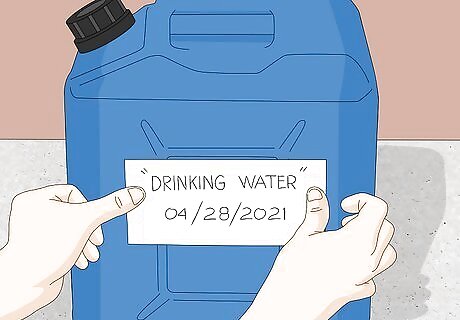
Label the container. Write "drinking water" on the side, along with the date you bottled it or purchased it.
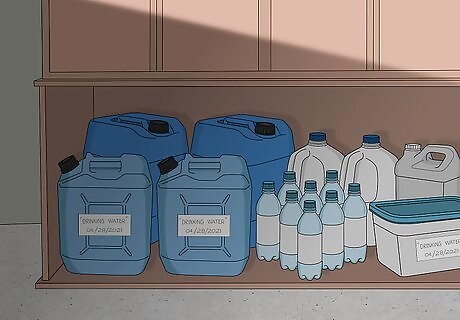
Store in a cool, dark place. Light and heat can damage containers, especially plastic ones. Sunlight can also cause algae or mold to grow in clear containers, even sealed, store-bought bottles. Do not store plastic containers near chemical products, especially gasoline, kerosene, and pesticides. Vapors can pass through some plastic containers and contaminate the water. Store a 3 day supply in small containers near an exit, in case of an emergency evacuation.
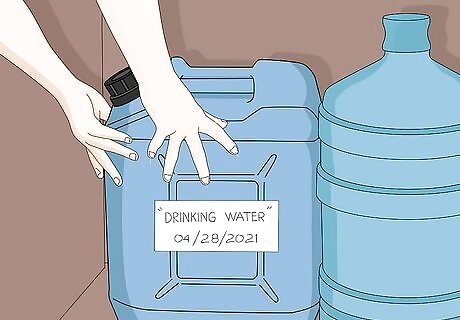
Check on the supply every 6 months. If stored properly, unopened, store-bought bottled water should stay good indefinitely, even if the bottle has an expiration date. If you bottled the water yourself, replace it every 6 months. Replace plastic containers when the plastic becomes cloudy, discolored, scratched, or scuffed. You can drink or use the old supply of water before replacing it.
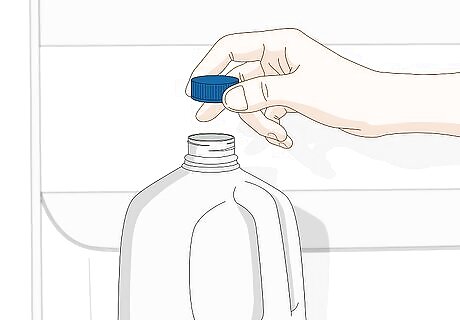
Open 1 container at a time. If you need to use your emergency supply, store open water containers in a refrigerator or cold location. Use an open container within 3 to 5 days in the refrigerator, 1 to 2 days in a cold room, or a few hours in a warm room. After that, purify the remaining water again by boiling it or adding chlorine. Drinking directly from the container or touching the rim with dirty hands increases the risk of contamination.

















Comments
0 comment